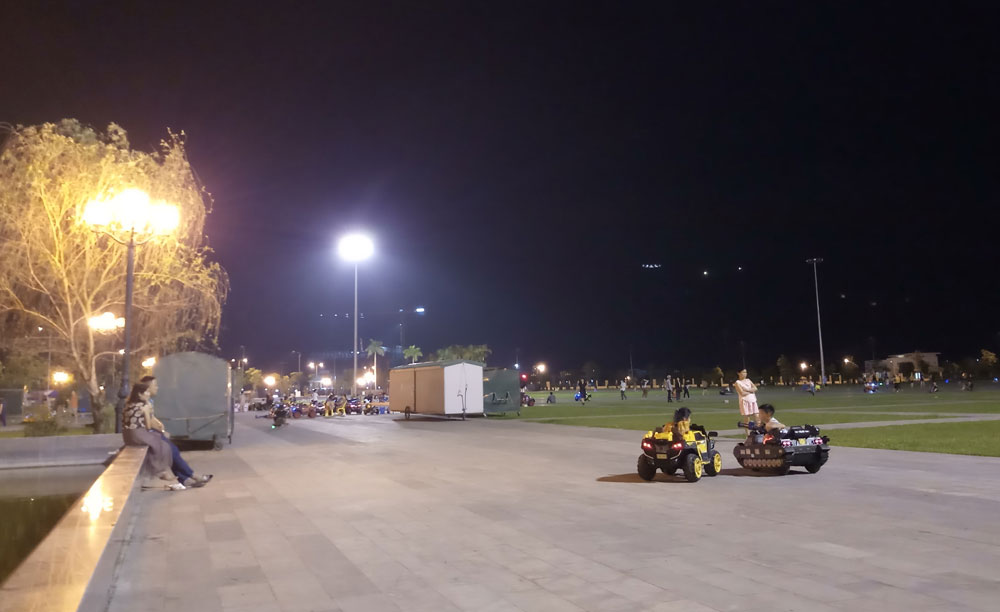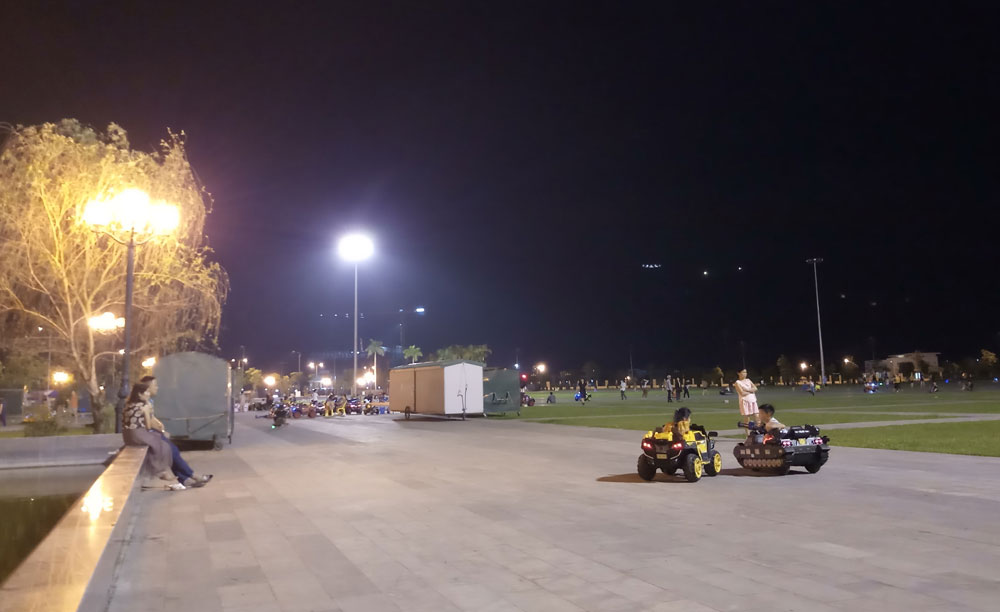
(HBO) - Inaugurated in 2016, Hoa Binh square in Hoa Binh city of the province of the same name has become a favourite playground of both children and adults. Many people come to the site at dusk and in the evening to jog, ride bicycles and stroll. Youngsters sometimes play music for dancing and hip hop practice, livening up the atmosphere.
 Hoa Binh square
becomes a favourite playground of children.
Hoa Binh square
becomes a favourite playground of children.
The square,
also known as Quynh Lam multi-purpose complex, was constructed to mark 130
years of the province’s establishment and 25 years of its re-establishment.
Recalling
the period when the complex was being built, an architect took part in the
project said it is a construction work of political, architectural and cultural
significance, creating a highlight for Hoa Binh city’s urban landscape. It
bears both modern and traditional cultural features, including the gong
cultural space of the Muong ethnic minority people.
The centre
of the rostrum is a symbol of six main groups residing in the province, namely
Muong, Thai, Kinh, Tay, Dao and Mong. The symbol contains six pillars similar
to the frame of a stilt wooden house of the ethnic groups as well as the
character "Person” in Chinese language. An image of a reformed version Muong
gong is placed in a square-shaped flower background.
Hoa Binh
square has lightened up local people’s lives. Everyone coming to the site is
aware of maintaining the landscape and environment./.
Located just a 20-minute drive from Hoa Binh City, Ora Hill Farmstay & Glamping Hoa Binh is a captivating new destination nestled in Mo hamlet, Bình Thanh commune, Cao Phong district. Combining farming with leisure, this tranquil retreat is perfect for those seeking balance, joy, and an immersive experience in the expansive beauty of nature.
Muong Bi - Tan Lac is renowned as one of the four famous Muong regions in Hoa Binh province. Blessed by nature with a favourable climate and stunning landscapes, Tan Lac holds great advantages for tourism development. The local tourism industry has made remarkable strides in recent times thanks to the attention and support from the local authorities and sectors.
With its strategic location, well-developed transport network, and diverse soil and climatic conditions, Hoa Binh is emerging as a must-visit destination in Vietnam's northwestern tourism corridor. The province boasts numerous attractions, including the Kim Boi hot springs (Kim Boi district), the Dau Rong cave complex (Cao Phong), the Mai Chau valley (Mai Chau), and the iconic Hoa Binh hydropower plant.
The northern mountainous province of Hoa Binh has been listed among the 71 most beautiful places to visit worldwide by the prestigious US travel magazine Condé Nast Traveller.
Hoa Binh province’s rich natural and cultural resources position it as a prime location for developing community-based tourism (CBT). In recent years, support from central and provincial policies, as well as assistance from non-governmental organisations, have encouraged local ethnic minority and mountainous communities to actively engage in the sector.



 Hoa Binh square
becomes a favourite playground of children.
Hoa Binh square
becomes a favourite playground of children.